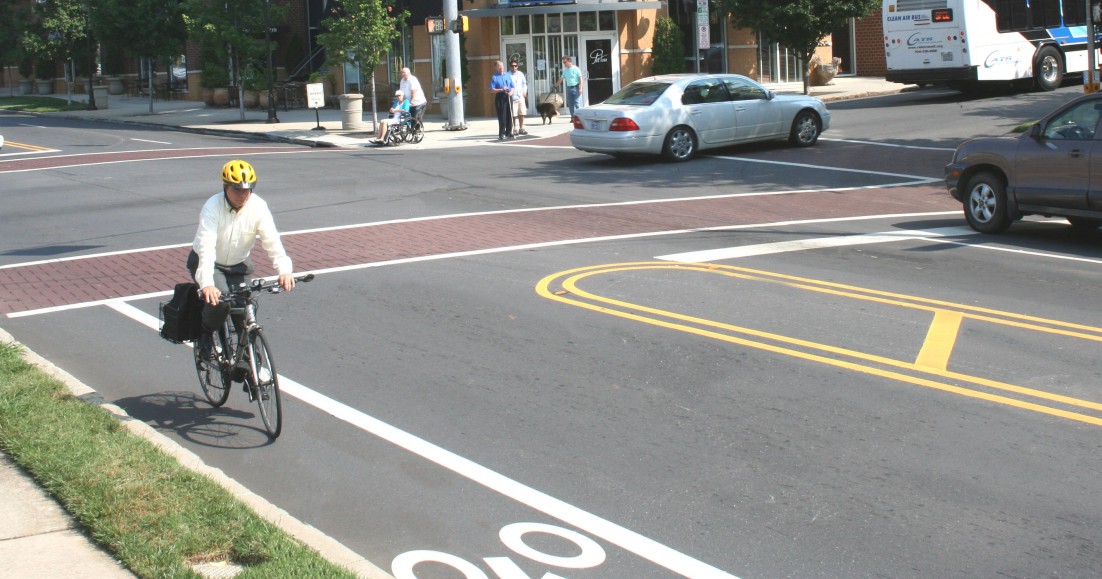Benefits
Bicycling and walking facilities provide a wide range of benefits to individuals, their communities, and the surrounding environment. The information below summarizes some of the many types of mobility benefits that can be gained by accommodating pedestrians and bicyclists within North Carolina's transportation network.
Walking and bicycling facilities provide efficient options for commuting and short trips.
According to the 2011 Bicycle and Pedestrian Safety Survey, at least 70 percent of North Carolinians would walk or bike more for daily trips if walking and bicycling conditions were improved. With appropriate accommodations, walking and bicycling can provide alternatives to driving for commuting to work, running errands, or making other short trips. Half of all trips made in the U.S. are three miles or less, yet 72 percent of these short trips are driven. Many of these could easily be made by walking or bicycling if sidewalks, bike lanes, paths, or other facilities were provided to improve safety, efficiency, and convenience.
| Trip Distance | % of Trips | Cumulative % of Trips | Minutes to Walk | Minutes to Bike |
|---|---|---|---|---|
| 1 mile or less | 28 | 28 | 15 | 5 |
| 1.1 – 2 miles | 13 | 41 | 30 | 10 |
| 2.1 – 3 miles | 9 | 50 | 45 | 15 |
Reduced Vehicle Miles Traveled (VMT) & Congestion
Taking short trips by foot or by bike can help to greatly reduce motor vehicle miles driven and traffic congestion. Under the Nonmotorized Transportation Pilot Program, walking and bicycling investments averted an estimated 32 million driving miles in four pilot communities between 2007 and 2010.37 These individual changes in travel behavior can add up to produce significant societal benefits. An individual who shifts 160 annual trips (about three per week) averaging 2.4 miles from driving to bicycling reduces congestion costs to other road users by approximately $216 in urban areas and about $108 in rural settings. Traffic on arterials and other streets can be mitigated as people use sidewalks, bike lanes, paths, and other alternatives to get around. Parking lots can also be made less congested by reducing crowding, circling, and waiting for open spots.
Affordable Transportation Options & Cost-Efficient Projects
Walking and bicycling are also among the most affordable forms of transportation. According to an annual study conducted by the American Automobile Association (AAA), the average cost of owning and operating one car for one year is $8,946, while walking is virtually free and owning and operating a bicycle for one year costs approximately $120.39, In addition to the personal savings costs of walking and bicycling, these transportation options also produce a number of benefits for other drivers and society as a whole. A study from the Victoria Transport Policy Institute found that replacing a single car trip with a bike trip saves individuals and society $2.73 per mile in gas costs, congestion reduction, vehicle cost savings, roadway cost savings, parking cost savings, energy conservation, air pollution reduction, and traffic safety improvements. These benefits and the relatively low construction and maintenance costs make walking and bicycling projects some of the most cost-effective transportation investments possible. For the cost of 1 mile of four-lane urban highway ($50 million), an entire network of pedestrian and bicycle facilities for a mid-sized city could be built, providing feasible travel options that increase the overall efficiency of our transportation system.





